Review: The LEGO Neighborhood Book 2: Build your own city!
Brian and Jason’s wildly successful 2014 book teaches you how to build a town in the LEGO Modular Building Style. Does the sequel offer enough new ideas to grow your LEGO town into a fully-fledged city?
I reviewed this book side by side with its predecessor, The LEGO Neighborhood Book: Build your own town. I am really fond of the first book, which I purchased earlier this year. I built a number of models in the first book, including the base house which you can adapt to different architectural styles by adding panels of detail. This is a clever way to play around with different building styles without having to rebuild the entire structure. I also built all the mini-builds in the second book while writing this review.
Book Cover
The cover of LEGO Neighborhood Book 2 shows the corner of a city neighborhood. The composition is similar to the 2014 book which showed a suburban street corner. The books are the same size and a similar length at about 200 pages.. They will look good together on your bookshelf.
This is one of the best covers I have seen; it is very crisp and gives a real sense of the depth of the scene. Seeing both books side-by-side, the cover of the 2018 book has significant improvements. There was nothing wrong with the 2014 cover, but the difference perhaps shows the advances in image technology generally, or possibly the influence of the blurring of the line between real and computer-generated LEGO imagery. Whatever the reason, it will look great sitting out on your coffee table.
The cover may lead you to believe that you are getting build instructions for all of the buildings shown. Yet there is only one set of detailed instructions in the book– for the corner building with two condominiums shown in the middle of the cover image. The book has several pages dedicated to the exterior and interior detailing of some of the other buildings on the cover which help you get started in trying to replicate them. (The Japanese Restaurant and Board Shop are on the left hand side and the Boutique Hotel and a smaller store are on the right.)
Book Contents
The book is divided into a short introduction followed by six chapters. The first three chapters focus on a range of exterior and internal elements of buildings, offering a detailed look at residential, commercial and public places.
The table of contents clearly shows (via both text color and an asterik) which city elements have building instructions. This makes it easy to dip in to the book exactly where you need.
As a town planner, I probably have an unusual perspective on how uses are grouped in LEGO cities. I was concerned that the book divides the residential and commercial districts yet current trends in city planning prefer to see all different uses mixed up together in the city. I was pleased to see that the authors intend for the uses to be mixed, they are just separated into chapters for ease of reference.
The Builds
The book contains a wide range of projects – from buildings to small elements for streets to building interiors. There are countless instances of 3 or 4 pieces forming something inventive. For example a fish wall plaque (see image below) for your office wall – created with a 2×4 plate (part 3020), a 2×2 tile (part 3068), a 2×2 jumper plate (part 87580), a 1×1 clip (part 15712), and a fish (part 64648). There are also a number of ancillary structures for a city which may not be covered in other books. As another example, the book provides a mini-build for a DVD rental machine.

A fish wall plaque (left), and a home office noticeboard (right) are two examples of simple but effective builds.
One niggle is the size/coloring of the instructions for the mini-builds. The authors fitted each set of instructions on a single page. The instructions are creatively designed to guide the reader, but in places can be difficult to read. I believe this is due to the small size and the color contrast. With official LEGO instructions you have two different scales on the page: smaller images of the pieces in the parts list inset and a larger, easier to read, instructional image on the page. With this book, the scale of instructions match that of the parts list in official LEGO instructions. So I I found, particularly at night in artificial light it was difficult to read. It was also difficult to see the black outlines of the bricks – they blended into the color of the brick particularly when it was a bolder color such as red (as with the DVD Rental Kiosk on page 42). LEGO instructions often outline darker colored bricks in white rather than black. Perhaps colored pages, like LEGO use on their instruction manuals, may also make this easier to read.
I wanted to like the mini-builds more than I actually did. I liked the contemporary items shown such as DVD rental machine and barbecue grill, but I wasn’t very satisfied with the end result. I also felt like some elements seemed inconsistent with the ‘city’ theme of the book. The traffic light mini-build in the first book has a more ‘city’ aesthetic than the more suburban traffic light in this second book. This may be because I am sure this second book was not planned when they wrote the first book so the divide between what is town and city is not very well defined.
The introduction also has a great picture of the whole city neighborhood which would have been great to see as a two-page spread rather than a smaller inset on one page. This creates a great ‘map’ for the tour of the city neighborhood shown in this book.
Book Style
The book has the same style as the first book. Page designs feature stud motifs and the two authors are represented as animated mini-figures which personally guide you through the book. I like this personal interface with the reader and the breaking of the fourth wall.
Unfortunately, some of the images in the book were not well lit which detracts from the book. With high quality images in the rest of the book, these lower quality images stand out.
The Chapter 4 gallery I found a little distracting from the main theme of modular city building. It starts well with some further city buildings, including some fun buildings by the author’s children. However, towards the end of Chapter 4 some of the builds were not on this theme – they were neither city nor modular. I would have preferred these last few creations to be left off and more detailed photography added to some of the other chapters. There were plenty of great MOC in this book which deserved a few more images to help the audience decipher the building techniques. I felt this would have been better than the “off-topic” MOC such as Ancient Persia and the Wild West.
Chapter 5 deals with cities at the micro scale. This is a very useful addition to the book – those with smaller LEGO collections can appreciate the rest of the book, but try their hand at a full city in micro scale. The range of buildings pictured at microscale is very comprehensive given the 18 pages dedicated to this chapter. Again, it is more around design inspiration as no instructions are given.
A downloadable parts list is available for both books on the publisher’s website – I was able to find the list (and a bonus build) for the 2014 book, but not the list for the latest book yet. The write up also seemed to have some inaccuracies on the contents of the book. Overall, I appreciate the inclusion of a parts list to make the process of these custom builds a bit easier.
I have recently observed that since LEGO started making us decorated tiles to form LEGO sets for our minifigures, the AFOL have started constructing LEGO stores and LEGO rooms in their minifigure homes. There is also a nice little meta surprise involving the two scales used in this book – I won’t spoil the surprise but I enjoyed this touch.
Who is this book for?
This book is a great resource for those creating their own city scene and looking for inspiration for both building design and ancillary city elements. The authors provide all sorts of urban details which are often overlooked in other books. A range of machines from our modern life are included such as a soda can dispenser, DVD rental machine and air conditioning units. Less obvious elements such as security keypads and standing desks are also included, again reflecting the modern times in which we live.
For the novice, the book probably lacks the instructions and entry level construction techniques needed. It would be better to start with the 2014 book as a more guided introduction. For both exterior building elements and the furniture inside the first book provides a multitude of design options. Instructions are generally not required as they are relatively simple builds for all but beginners.
The lack of detailed instruction is a strength of this book for the more experienced LEGO fan. Design inspiration is provided from whole buildings to simple everyday items. New uses for old bricks are common – I liked the idea of using a stack of 1×2 graters (Part 61409 – Slope 18 2 x 1 x 2/3 with 4 Slots) to display snow goggles at the ski shop. Most ideas shown in the book will need to be “reverse engineered” to replicate in your MOC and so some experience is required.
It is undoubtedly a great book to flip through for ideas and to leave on your coffee table to inspire others. It does what it set out to do which is to expand the town you created with the help of the first book.
Conclusion
For those looking to get started on their first MOC modular building scene I would recommend the 2014 book over this recent second volume. The instructions and design choices, along with the customizable façade elements on a standardized base building, make the 2014 book a fabulous resource.
For those looking to expand beyond their existing ideas, this second book contains more inspiration to take your designs further. I didn’t find that the second book showed designs much more “urban” than the first. The first book provided three level buildings as well, and the second book is also in that scale of urban development. Though with modular buildings you could go high rise just by adding some further levels to your buildings. I would say that the 2018 book is focused on expanding the size and variety of uses in your town/city rather than taking it higher rise.
For those that do not yet own either of these books, if you are looking for a nice coffee table book to inspire you, I would recommend this latest book. For those looking for lots of design options, instructions and guided support via bases with customizable facades, I would recommend the 2014 book as your first buy. Of course, these two books work really well as companion volumes.
For all of these reasons, I give this book a “Good” (3/5 star) rating. It is a good book, but not quite as good as the 2014 book which deserves a “Highly Recommended” (4/5 star) rating.

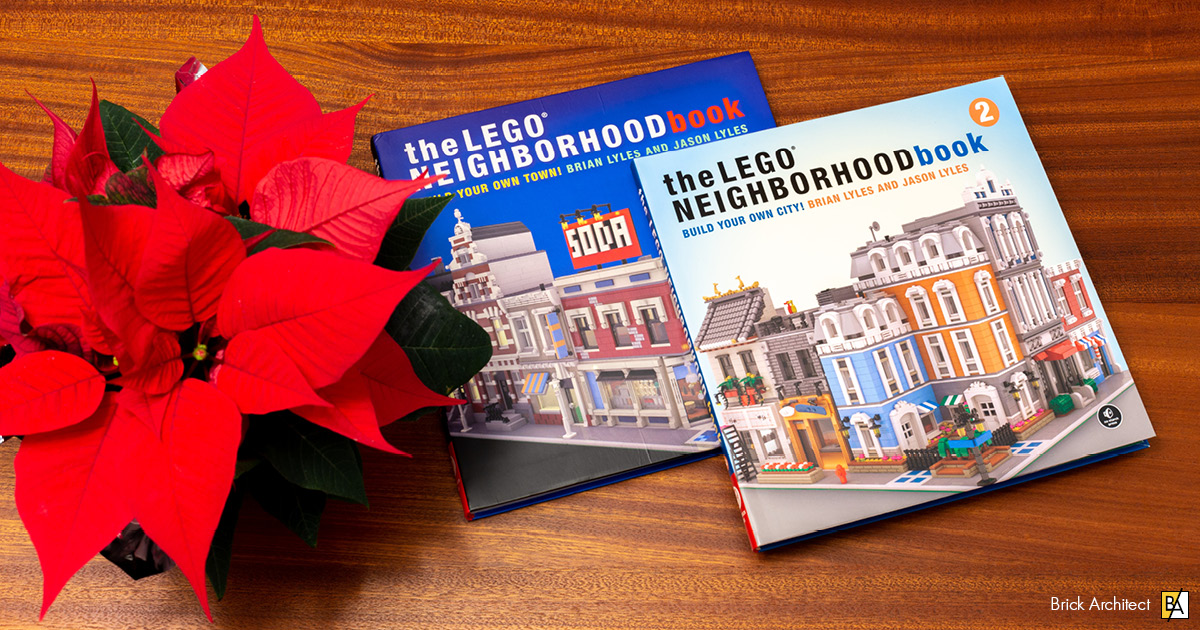
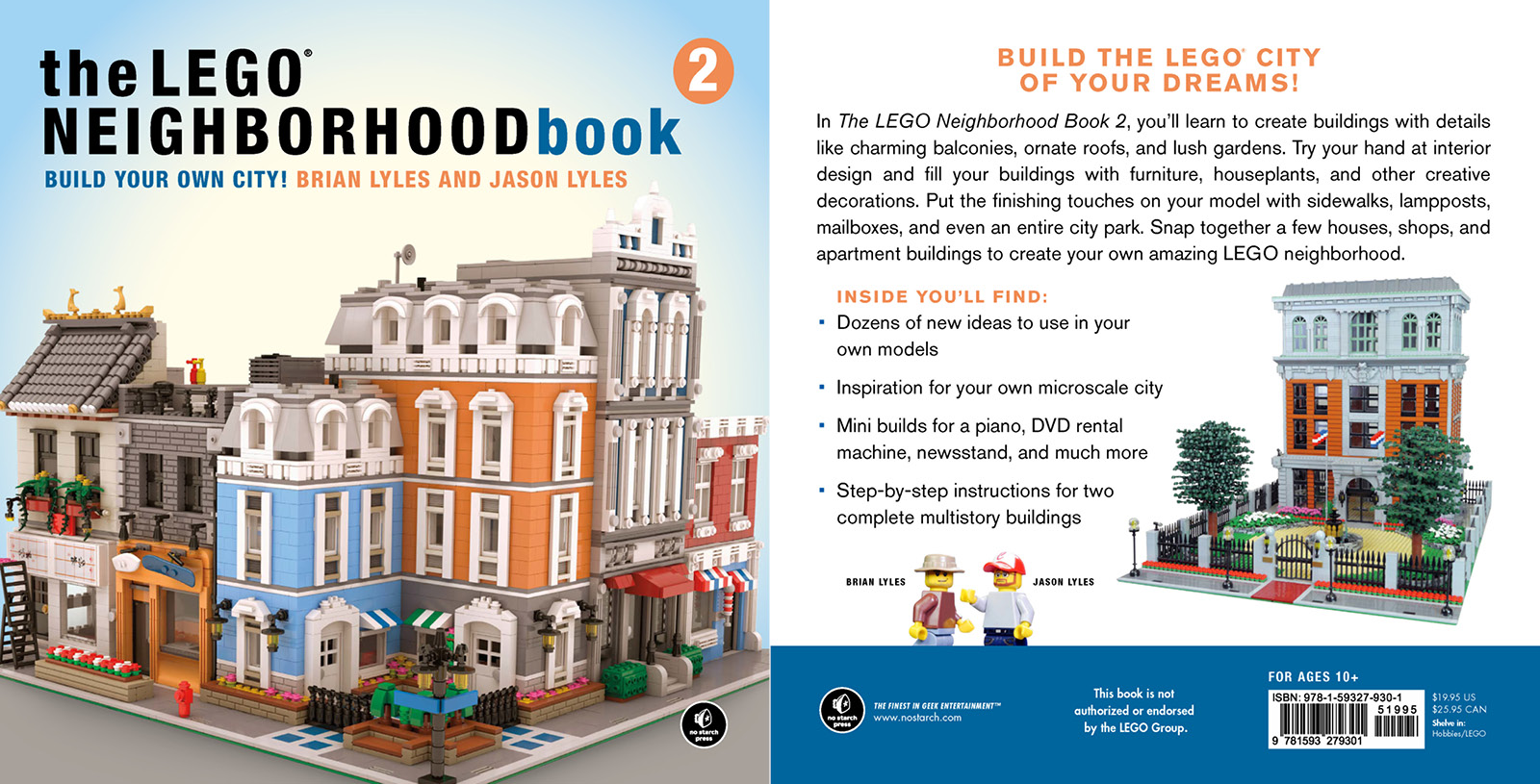
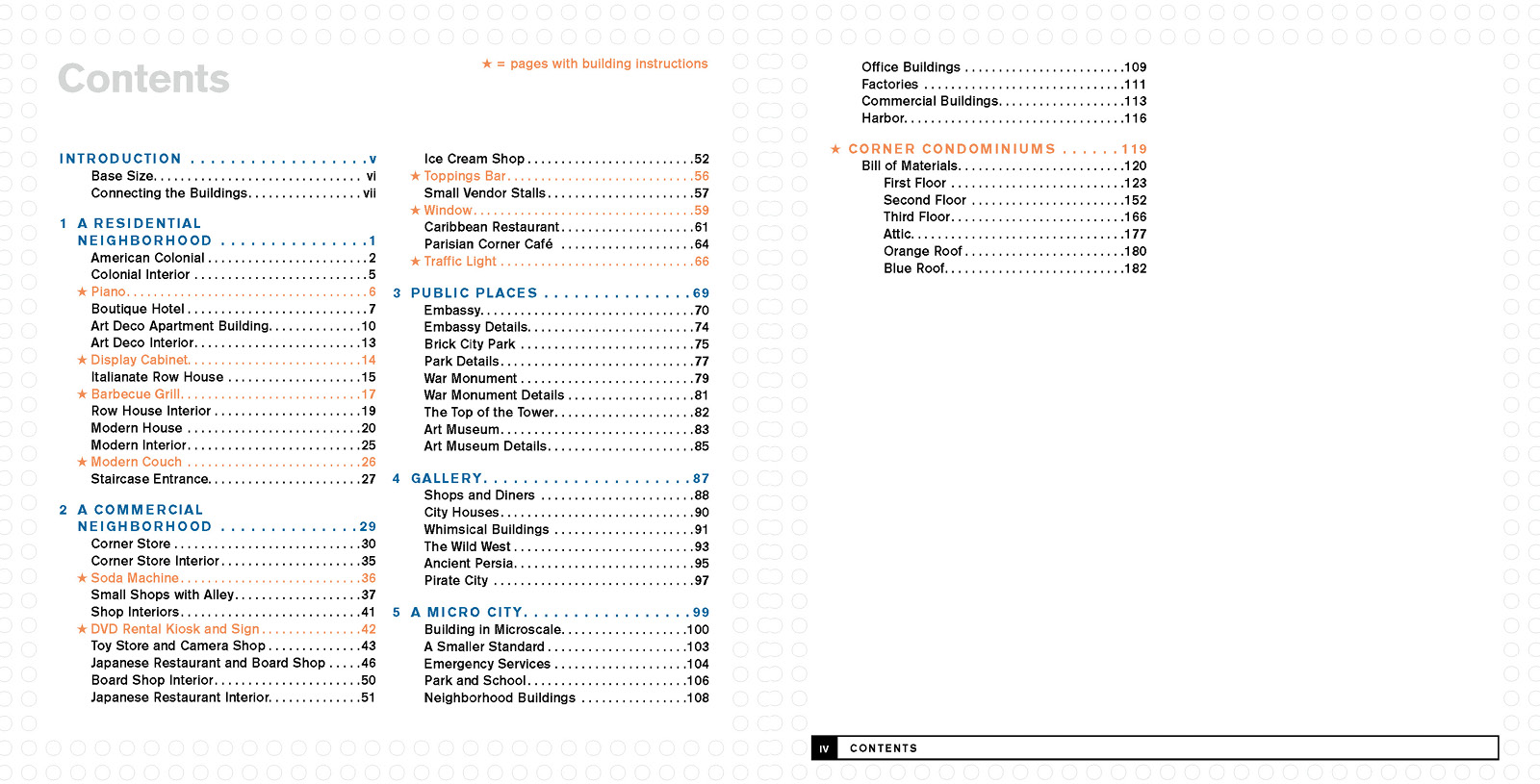

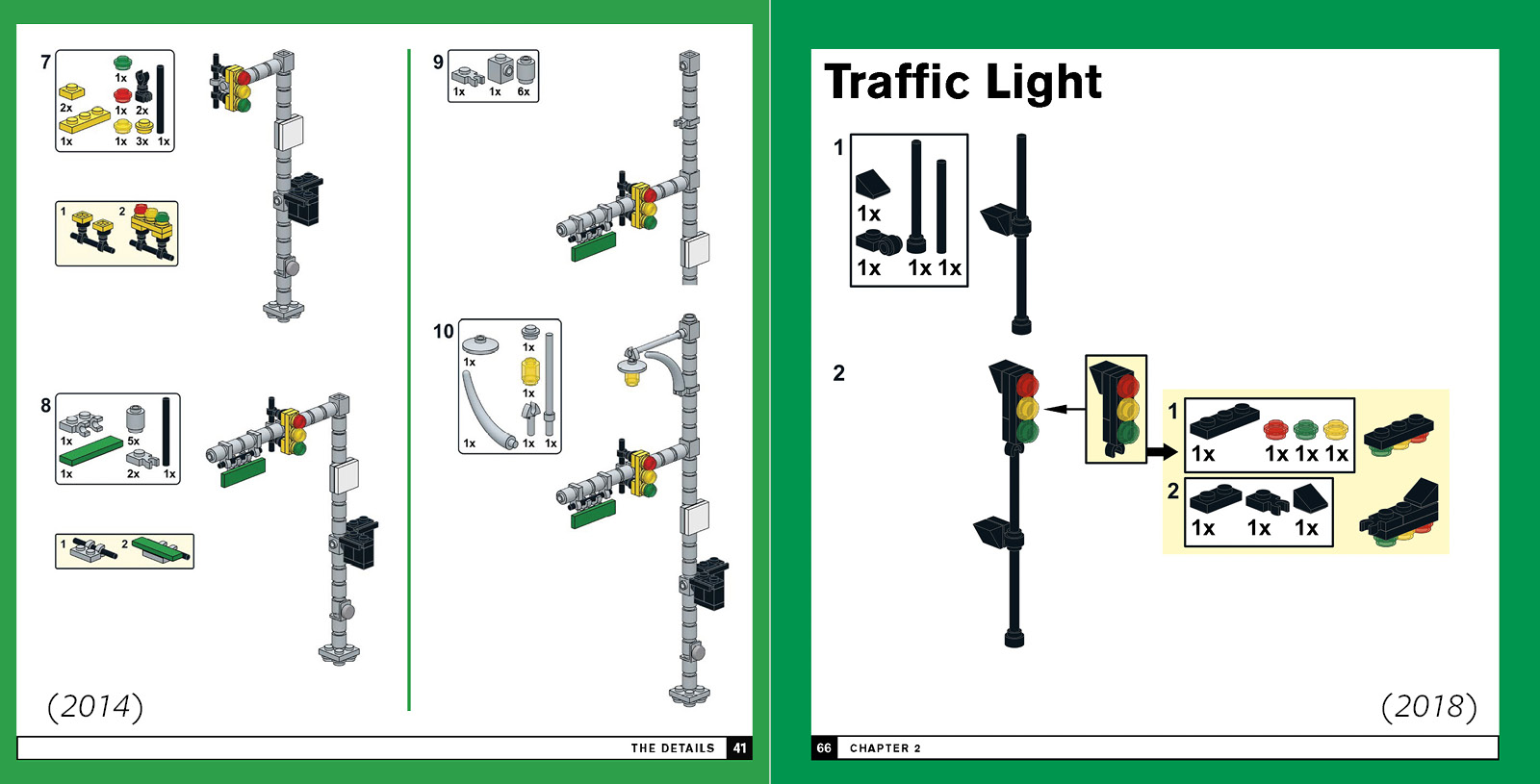

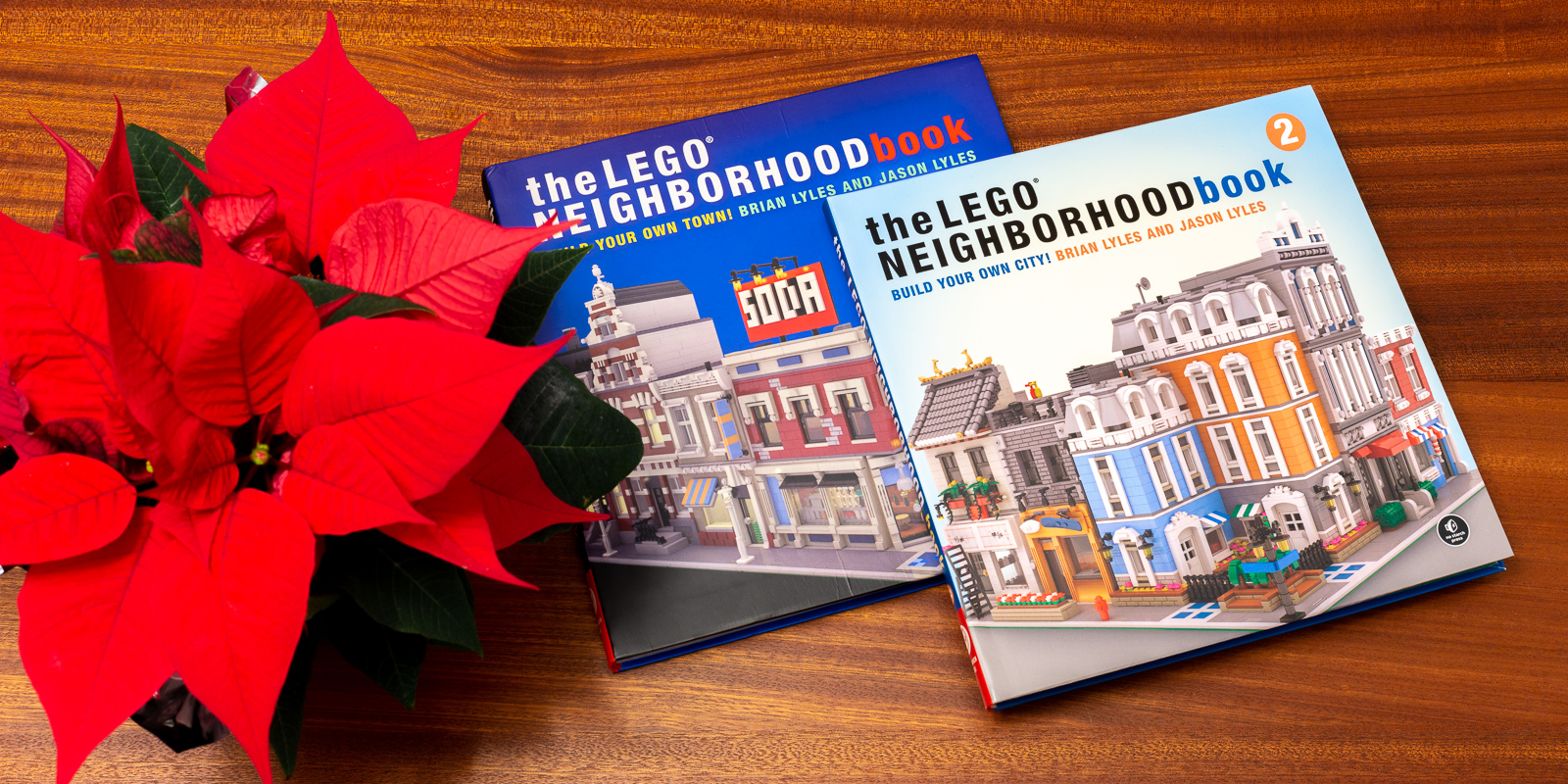
I am an AFOL who is getting back into Lego and wants to build MOCS. I have both versions of this series but they seem a bit complicated. So what book would you recommend me to purchase or resource should I use to get a better beginning point?
I am a bit biased, but I do recommend my own book, The LEGO Architect. The box includes photos of really complex, ambitious projects, but also includes instructions for several smaller buildings which can be built using relatively common pieces. Another great book is the LEGO Micro Cities book (review coming soon…)